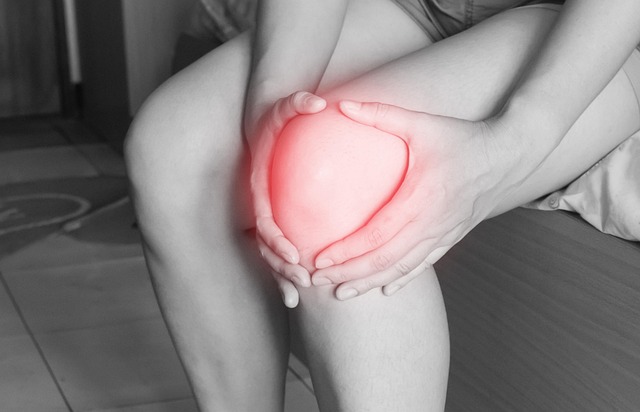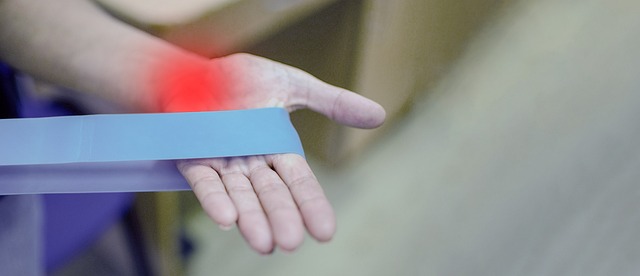Category: Cryotherapy For Pain Management
Cryotherapy for Pain Management: A Comprehensive Overview
Introduction
In the realm of healthcare, managing pain effectively remains a pivotal challenge. Among various innovative approaches, cryotherapy has emerged as a promising method for pain relief, offering a unique and targeted solution. This article delves into the world of cryotherapy specifically tailored for pain management, exploring its mechanisms, global impact, technological advancements, and future potential. By examining these aspects, we aim to provide an insightful guide for healthcare professionals, researchers, and individuals seeking alternative pain treatment options.
Understanding Cryotherapy for Pain Management: Unlocking the Concept
Definition: Cryotherapy is a therapeutic process that utilizes extreme cold temperatures to alleviate pain and inflammation in specific body areas. In the context of pain management, it involves applying cryogenic materials or freezing techniques to affected tissues, leading to temporary or prolonged analgesia (pain relief).
Core Components: The fundamental elements of cryotherapy for pain management include:
-
Cryogens: Substances that can produce extremely low temperatures, such as liquid nitrogen, carbon dioxide (dry ice), or argon. These are commonly used in the form of packs or sprays to deliver cold therapy.
-
Freezing Techniques: Various methods like cryosurgery, where a probe or applicator delivers precise and controlled freezing to targeted tissues, and topical cryotherapy, which involves applying cold packs or gel pads directly to the skin.
-
Pain Targeting: Cryotherapy is particularly effective for localized pain, including joint pain, muscular soreness, nerve injuries, and certain types of inflammation. It works by interrupting pain signals, reducing blood flow to the affected area, and inducing a protective response in cells.
Historical Context: The concept of cryotherapy dates back centuries, with early practitioners using cold compresses for their anti-inflammatory and analgesic properties. However, its modern application for pain management gained traction in the late 20th century. Significant advancements were made in the 1970s and 1980s, leading to more precise techniques and a better understanding of its mechanisms. Today, cryotherapy is recognized as a valuable non-invasive procedure for managing chronic pain conditions.
Global Impact and Trends: A World of Cryo-Relief
Cryotherapy for pain management has left a significant global footprint, with varying adoption rates across regions. Here’s an overview:
| Region | Market Adoption | Key Drivers | Challenges |
|---|---|---|---|
| North America | High | Strong focus on innovative healthcare, advanced medical infrastructure | High cost of therapy, limited insurance coverage for non-invasive procedures |
| Europe | Moderate to High | Growing acceptance in chronic pain management, strong clinical research base | Regulatory disparities among countries, patient awareness |
| Asia Pacific | Rising | Increasing demand for alternative medicine, growing healthcare expenditure | Cultural barriers to accepting new treatments, limited access in rural areas |
| Middle East & Africa | Low to Moderate | Growing interest in non-pharmacological pain management | Limited medical infrastructure, economic constraints |
Trends Shaping the Industry:
-
Growing Acceptance in Chronic Pain Management: One of the most significant trends is the increasing recognition of cryotherapy as a long-term solution for chronic pain conditions like arthritis, fibromyalgia, and nerve damage.
-
Advancements in Cryosurgery: Precision cryosurgery techniques, such as targeted tissue freezing, are gaining popularity, allowing for more effective treatment with reduced side effects.
-
Integration of Technology: The integration of technology, including mobile applications and telemedicine, enables remote monitoring of patients and facilitates easier access to cryotherapy services.
-
Personalized Treatment Approaches: Healthcare professionals are tailoring cryotherapy protocols to individual patient needs, enhancing treatment outcomes and patient satisfaction.
Economic Considerations: A Cryo-Economic Analysis
The economic landscape of cryotherapy for pain management is complex, with various factors influencing its market dynamics.
Market Dynamics:
- The global cryotherapy market was valued at USD 2.5 billion in 2021 and is projected to grow at a CAGR of 7.2% from 2022 to 2030 (Source: Grand View Research).
- North America dominates the market, driven by rising healthcare expenditure and technological advancements.
- The Asia Pacific region is expected to witness significant growth due to increasing awareness and the growing middle class.
Investment Patterns:
- Private equity and venture capital firms have shown interest in cryotherapy startups, backing research and development efforts.
- Major pharmaceutical companies are investing in cryo-related technologies for pain management, indicating a strategic shift towards non-invasive treatments.
Economic Impact:
- Cryotherapy offers cost-effective pain management alternatives, potentially reducing the financial burden on healthcare systems and patients.
- It can serve as an adjunct to traditional therapies, allowing for more efficient use of medical resources.
Technological Advancements: Revolutionizing Pain Relief
Technological breakthroughs have significantly enhanced the capabilities and effectiveness of cryotherapy. Here’s a glimpse into some key developments:
-
Smart Cryo-Probes: These devices incorporate advanced sensors and temperature control systems, enabling precise freezing and real-time monitoring during cryosurgery.
-
Targeted Delivery Systems: Newer cryogenic delivery systems, such as micro-injectors and nanomaterials, allow for more targeted and controlled cold application, enhancing therapeutic efficacy.
-
Telemedicine Integration: Mobile health applications facilitate remote consultations, treatment planning, and follow-up care, making cryotherapy more accessible to patients worldwide.
-
Artificial Intelligence (AI): AI algorithms are being used to predict pain response patterns, optimize treatment protocols, and personalize patient care.
Case Studies: Real-Life Applications of Cryo Therapy
Case 1: Arthritis Management
Patient Profile: A 62-year-old female with severe knee osteoarthritis, experiencing chronic pain and reduced mobility.
Treatment Approach: Topical cryotherapy using a cold pack was applied to the affected joint for 20 minutes, three times weekly for 4 weeks.
Outcomes: After 4 weeks, the patient reported a significant reduction in pain (70% decrease) and improved knee function. The effects persisted for over 8 weeks post-treatment.
Case 2: Nerve Damage Recovery
Patient Profile: A 35-year-old male with peripheral nerve damage due to a previous injury, causing chronic burning sensations and numbness.
Treatment: Precision cryosurgery was performed to target the affected nerves, followed by physical therapy.
Results: Within 6 weeks, the patient experienced a marked reduction in pain and improved sensitivity. He regained mobility and resumed normal activities without significant side effects.
Safety and Side Effects: Navigating Cryo Therapy’s Landscape
While cryotherapy is generally considered safe, it does have potential side effects, which are typically temporary and mild. Common ones include:
- Skin irritation or redness at the treatment site
- Temporary numbness or tingling in treated areas
- Minor bruising or swelling
- Headaches or dizziness (less common)
Serious Complications: Rare but serious complications may include tissue damage, infection, or cryo-induced nerve injury. These are most likely to occur with improper technique or when patients have underlying medical conditions.
Future Prospects: Shaping Cryo Therapy’s Horizon
The future of cryotherapy for pain management looks promising, with ongoing research and technological advancements opening new avenues.
Potential Directions:
-
Personalized Genomic Medicine: Combining cryotherapy with genomic testing may enable more tailored treatment approaches, considering individual genetic predispositions to pain and inflammation.
-
Cryo-Neuromodulation: Advanced neurostimulation techniques combined with cryotherapy could offer novel treatments for complex chronic pain conditions.
-
Minimally Invasive Cryosurgery: Ongoing research aims to develop less invasive cryosurgical techniques, reducing procedural risks and recovery times.
-
Telehealth Integration: The expansion of telemedicine services will make cryotherapy more accessible remotely, benefiting patients in underserved areas.
Conclusion: Embracing the Cryo Revolution
Cryotherapy for pain management represents a powerful tool in modern healthcare, offering targeted relief for a range of chronic pain conditions. With its growing global acceptance, technological advancements, and promising research outlook, it is poised to play a significant role in transforming pain management practices. As with any therapy, continued education, clinical trials, and patient monitoring are essential to optimizing its benefits and ensuring safe application.
Cryotherapy for Inflammation: Relieve Joint Stiffness?

Arthritis, characterized by joint pain and inflammation, impacts millions globally, with osteoarthri…….
Cryotherapy for Joint Pain: Stiffness Relief Potential

Cryotherapy, exposing affected areas to extreme cold, shows promise for managing arthritis-related j…….
Cryotherapy for Inflammation: Scientific Insights and Benefits Unveiled

Cryotherapy for inflammation harnesses extreme cold to target and reduce chronic inflammation, offer…….
Cryotherapy for Inflammation: Cold Relief for Chronic Pain
Cryotherapy: Cold Therapy for Pain Relief & Inflammation Reduction

Cold therapy for pain relief leverages extreme cold temperatures to reduce inflammation and block pa…….
Cryotherapy for Arthritis: Cold Therapy’s Efficacy & Safety

Arthritis sufferers find relief through cold therapy, a non-invasive approach targeting inflammation…….
Cryotherapy for Chronic Pain: Unlocking Nervous System Healing

Cryotherapy for chronic pain involves exposure to extreme cold, triggering a series of physiological…….
Targeted Cryotherapy: Cold Exposure for Nerve Pain Relief

Targeted cryotherapy for muscle pain offers a non-invasive solution to nerve sensitivity and chronic…….
Cryotherapy for Joint Pain: Safe Option for Active Relief

Cryotherapy for joint pain uses extreme cold to reduce inflammation, numb pain, and enhance circulat…….

